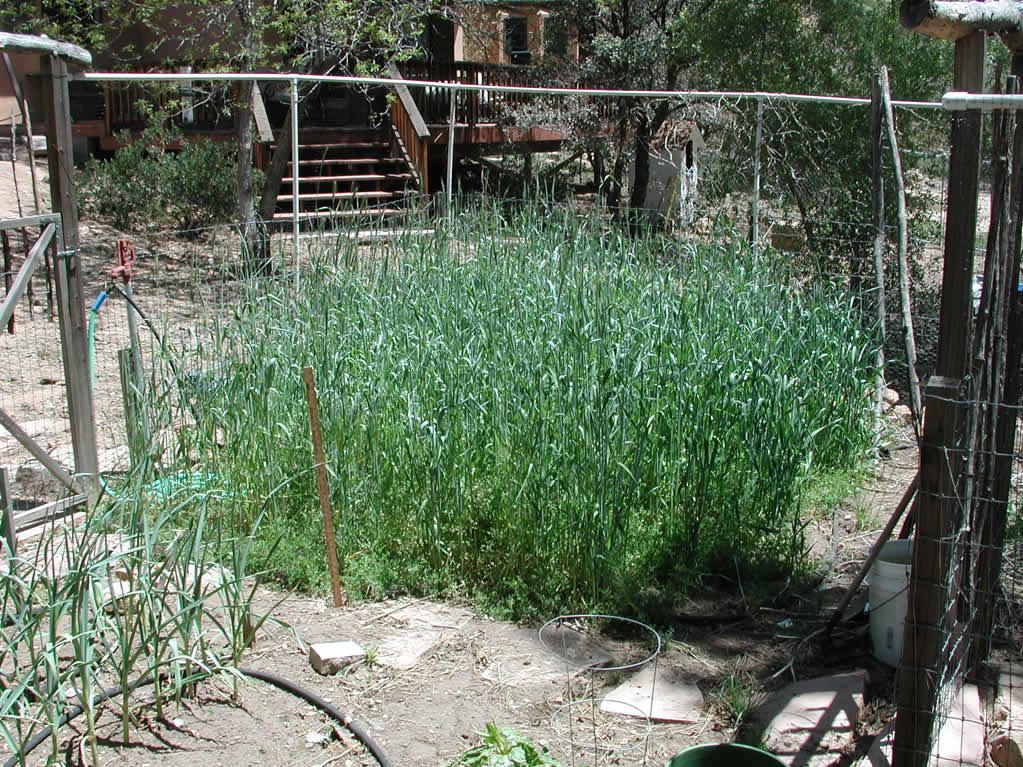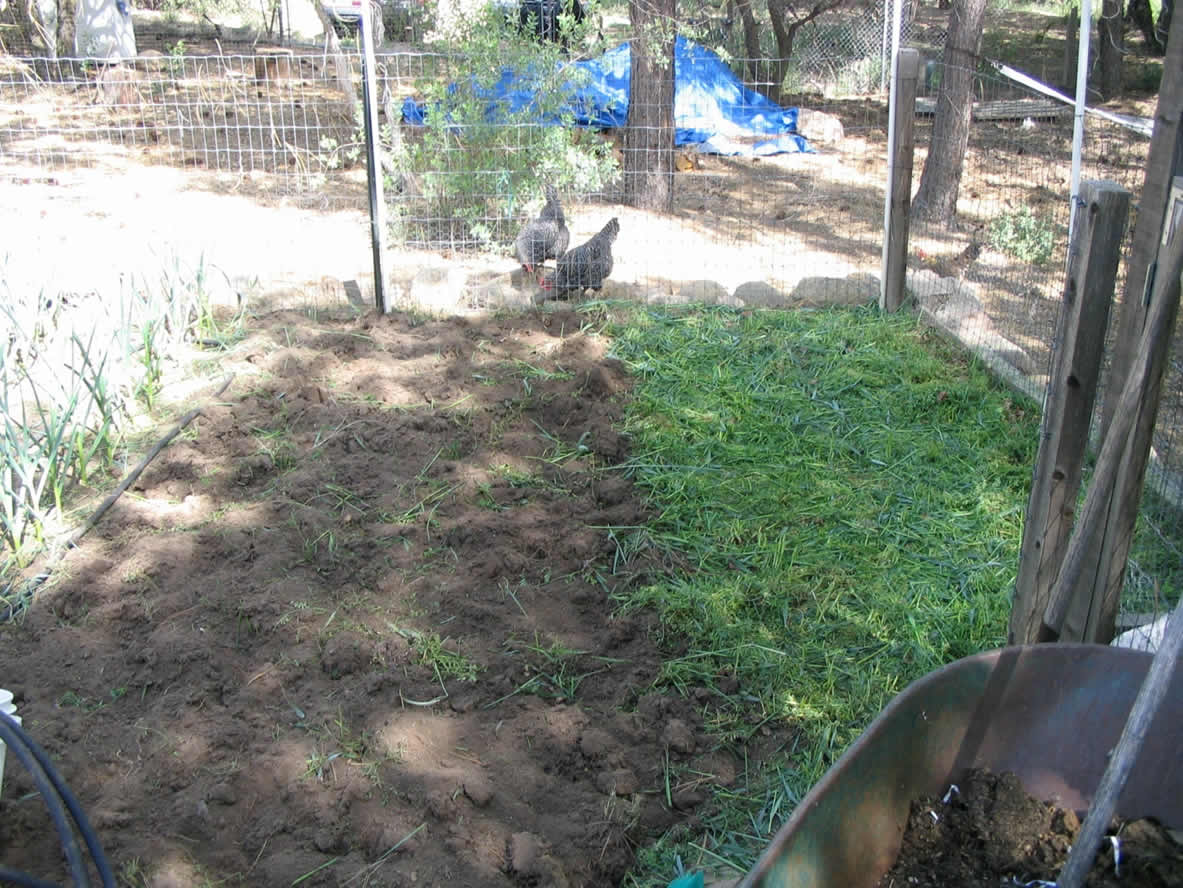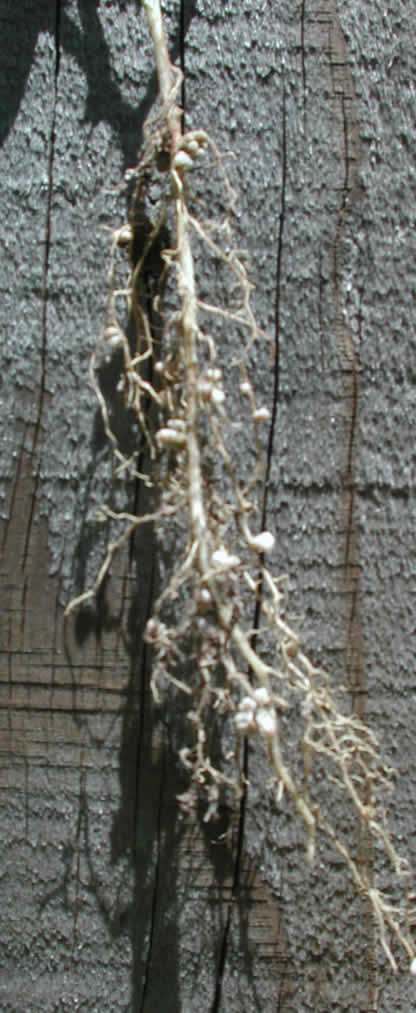 Grow a Fall Cover Crop - November 9, 2011 Jeff Schalau, Agent, Agriculture & Natural Resources University of Arizona Cooperative Extension, Yavapai County Fall is prime time for planting a cool season cover crop in your vegetable garden. Cool season cover crops are plants grown to add organic matter and nutrients to the soil while protecting it from wind and water erosion. Many cover crops are not allowed to completely mature before they are tilled into the soil as “green manure” prior to summer planting (green manures are turned under to provided organic matter and nutrients). Others are allowed to flower to attract and provide habitat for beneficial insects. Cover crop plants can be a single species or a combination of species suited to your climate and gardening objectives. Legumes are commonly used as green manure cover crops because of their ability to convert unavailable atmospheric nitrogen into plant-available nitrogen in the soil. Legumes are plants such as alfalfa, peas, beans, clover, vetch, and their relatives (also mesquite and cat claw trees). Many gardeners are aware of this phenomenon, but for those that aren’t, the process is called nitrogen fixation and carried out by bacteria (Rhizobium) that live in the roots of legumes. This is a symbiotic relationship where the legume receives nitrogen from the bacteria and the bacteria receive sugars from the plant. Quite often, cover crops also include annual grasses to increase soil organic matter. Grasses have fibrous root systems that utilize nitrogen released by the legumes and decompose readily to contribute organic matter. They also scavenge excess nitrogen and prevent it from leaching below the root zone or into groundwater. When tilled into the soil, the foliage from these plants also contributes nutrients and organic matter. Legume cover crops can add up to 300 lbs per acre of nitrogen. Some cool season annual legumes suitable for cover crops include common vetch, hairy vetch, sweet clover, red clover, and medic. Alfalfa is sometimes used as a cover crop and its roots penetrate deeply into the soil. Hairy vetch is an excellent cool season cover crop for the mid- and high-elevation areas of Yavapai County. It grows slowly in fall, but root development continues over winter. Growth quickens in spring, when hairy vetch becomes a sprawling vine up to 12 feet long. Field height rarely exceeds 3 feet unless the vetch is supported by another crop. The stand smothers spring weeds and can help you replace all or most N fertilizer needs for late-planted crops. All legume seeds should be inoculated with the proper strain of Rhizobium bacteria to ensure optimum nitrogen fixation. Garden catalogs that offer cover crops usually have detailed instructions about which inoculants to use and how to use them. Make sure you buy fresh inoculant each year. Studies have shown this to improve nitrogen fixation by cover crops. The inoculant is packaged in a mixture containing finely ground peat. To inoculate, place the seeds in a bowl with just enough water (I actually use milk because it is stickier) to barely moisten the seeds then add the entire package of inoculant. Stir and sow immediately. After broadcasting, gently rake that soil to shallowly cover the seeds with soil. In the past, I’ve sown a mixture of 85% hairy vetch and 15% cereal rye in October or early November. By early May, the rye was five feet tall and the vetch was trailing on the ground and climbing up the rye. I use a line trimmer to chop the plants into small pieces before incorporating the material into the soil. If you grow a legume, pull a plant up every now and then to observe the nodulation of the roots by the Rhizobium. Pink nodules on the roots indicate colonization by Rhizobium and effective nitrogen fixation. Cover crops can also be grown to meet other objectives. Mustards are sometimes planted to decrease root knot nematode populations. Root knot nematodes are plant parasitic, microscopic roundworms that can severely stunt plants. The bottom line: cover cropping is a sustainable, economical, and labor-saving way to maintain soil tilth and productivity. Below are photos of hairy vetch and cereal rye cover crops that I have grown in my garden. Follow the Backyard Gardener on Twitter using the link below. If you have other gardening questions, call the Master Gardener line in the Camp Verde office at 928-554-8999 Ext. 3 or e-mail us at cottonwoodmg@yahoo.com and be sure to include your name, address and phone number. Find past Backyard Gardener columns or provide feedback at the Backyard Gardener web site: http://cals.arizona.edu/yavapai/anr/hort/byg/.  Cereal rye and hairy vetch growing in spring.  Cereal rye/hairy vetch cover crop that has been chopped up and is in the process of being tilled into the soil as green manure.  Evidence of nitrogen fixation - nodules on roots of hairy vetch. |